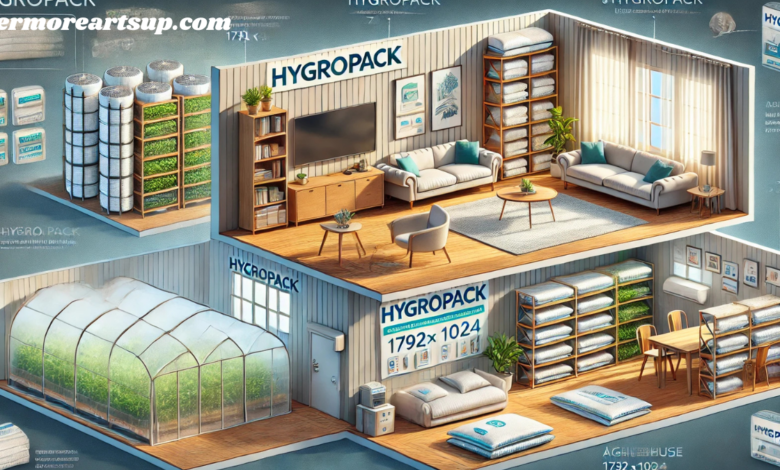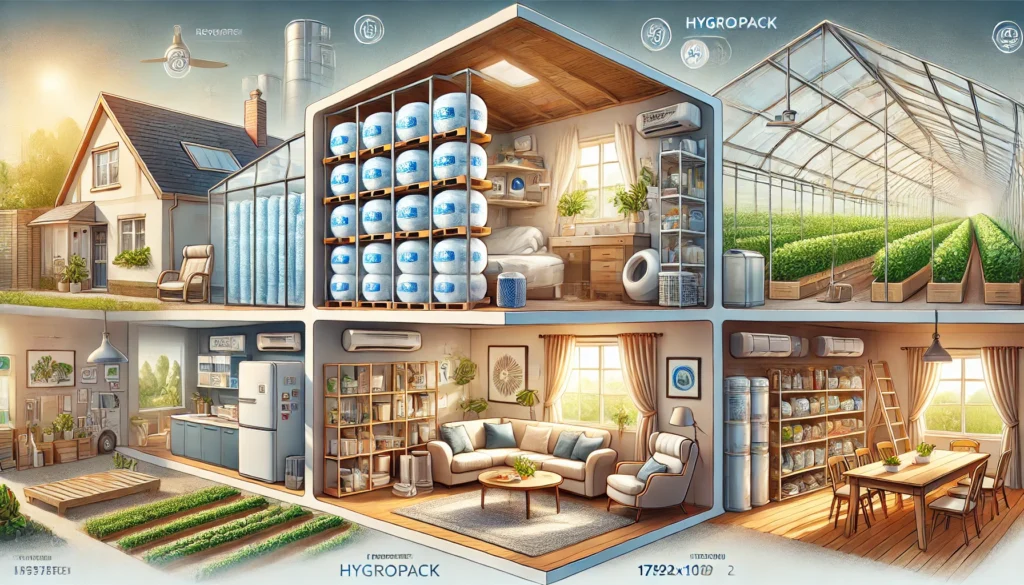Hygropack The Ultimate Solution for Moisture Control

Introduction
Innovative solutions cannot be Hygropack in the quest for maintaining perfect humidity levels, whether in our homes, warehouses, or greenhouses. One such revolutionary tool is the Hygropack, designed to tackle the persistent challenges of Hygropack control. This article delves into what a Hygropack is, how it works, and why it’s becoming a staple in moisture management across various sectors.
Moisture can be a formidable enemy, leading to mold, mildew, and damage to building structures and contents. For sensitive environments like industrial spaces and agricultural storage, the stakes are even higher, where excess humidity can ruin products and impact economic stability. Here’s where Hygropack comes into play, offering a reliable and efficient method to maintain optimal moisture levels, thereby protecting and preserving property and products.
What is a Hygropack?
A Hygropack is a specialized packet designed to either absorb or release moisture, maintaining a balanced humidity level in the surrounding environment. These packs are typically made from desiccant materials like silica gel, clay, or blends of materials that react to the ambient humidity. Unlike standard moisture absorbers, Hygropacks are engineered to be more precise in their humidity control, making them ideal for use in various settings, from residential to industrial.
The design and formulation of Hygropacks distinguish them from other moisture control products. They are often enclosed in permeable materials that let air flow through but trap moisture, facilitating an effective exchange of water vapor. This selective permeability is crucial for maintaining the packs’ longevity and effectiveness in various environmental conditions.
How Do Hygropacks Work?
Hygropacks function on the principle of adsorption or absorption, where moisture is either bound to the surface of the desiccant material or absorbed into it. This process depends mainly on the type of material used in the Hygropack. For example, silica gel works through adsorption, attracting water vapor to its surface, while other materials might absorb moisture into their structure.
This technology helps reduce excessive humidity and prevents the air from overdrying, which can be just as damaging. Hygropacks are designed to create a balanced environment, regulating moisture to optimal levels rather than completely removing it. This feature is significant in museums or archival storage rooms, where maintaining specific humidity levels is crucial to preserving artifacts and documents.
Applications of Hygropacks

The application of Hygropacks in residential settings is both beneficial and widespread. Maintaining optimal humidity in homes is essential for comfort and health. Excessive moisture can lead to the growth of mold and mildew, which are known to cause respiratory problems and other health issues. Hygropacks can be strategically placed in areas prone to high humidity, such as bathrooms, kitchens, and basements, to help control moisture and reduce the risk of mold growth.
Furthermore, these packs protect the integrity of wood furniture, musical instruments, and electronics, which are all sensitive to fluctuations in humidity. By stabilizing the environment, Hygropacks prevent the warping of wood, rusting of electronic components, and peeling of wall paint, thus helping to preserve a home’s assets.
In Commercial and Industrial Environments
The stakes are higher in commercial and industrial settings when it comes to controlling moisture. Warehouses storing goods, especially moisture-sensitive goods like pharmaceuticals and food products, benefit significantly from Hygropacks. These packs help maintain a dry environment, preventing the proliferation of bacteria and fungi, which can spoil the goods and cause financial losses.
Similarly, in the logistics sector, where goods are transported across different climatic zones, Hygropacks play a vital role in keeping the cargo’s environment within safe humidity levels, thus ensuring the quality of the products upon delivery. This application is a safeguard against moisture damage and a strategic investment in quality assurance.
Conclusion
Hygropacks represent a significant advancement in moisture control technology. Their versatile applications and cost-effective performance offer an essential solution to the pervasive humidity control problem. Whether protecting a home from the ravages of mold or ensuring the integrity of goods in a warehouse, Hygropacks provide a reliable defense against moisture-related challenges.
FAQs
What sizes do hygropacks come in, and how do I choose the right one?
Hygropacks come in various sizes, tailored to different needs and spaces. Choosing the right size depends on the volume of the area where moisture control is needed.
How long do hygropacks typically last before needing replacement?
The lifespan of a Hygropack varies based on its environment and the volume of moisture it absorbs. On average, they need replacement every few months.
Are hygropacks reusable or recyclable?
Some Hygropacks are designed to be reusable, where they can be reactivated by drying. Others are recyclable, adhering to sustainable practices.
Can hygropacks be used in electronic devices or only in rooms and containers?
Hygropacks are versatile and can be used in small enclosures, electronic device cases, and larger spaces, such as rooms.
What are the signs that a hygroma is no longer effective?
Signs include visible saturation of the pack or a noticeable increase in humidity despite its presence.
You May Also Read: https://livermoreartsup.com/coyyn/




